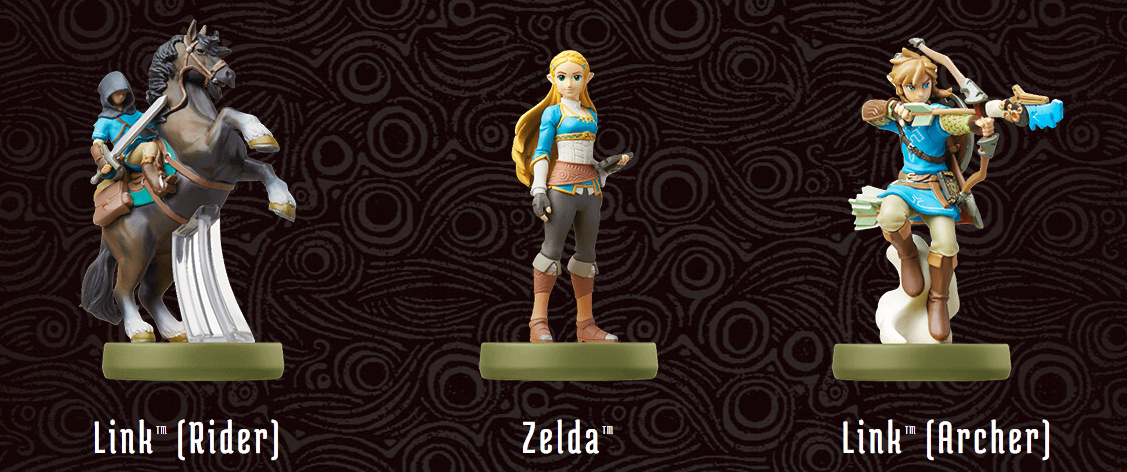
When Nintendo unveiled its amiibo range in Spring 2014 with the codename of "Nintendo Figurine Platform", it came at a time when the toys-to-life market was near its peak. After Skylanders had blazed a trail Disney Infinity had followed, and it had become a lucrative sector in the market. Nintendo's initial pitch was enticing - the visual and collectable appeal of Nintendo IPs in small figures, along with the promise that one toy could feasibly support a broad range of games in interesting ways. It was a generous twist on a hot trend.
When it was branded as amiibo and paraded at E3 that year, it was primarily tied to Super Smash Bros. for Wii U and to a degree the 3DS version; it was as good as 'synergy' - a term corporations love - can get. The diverse cast of the fighting game opened the door to a substantial range of varied characters, and in addition the game suited the toys-to-life concept rather well. The technology is extremely primitive in terms of reading and writing small amounts of data, but Masahiro Sakurai and his team utilised it to create trainable companions. Conceptually your amiibo was your ally or sparring partner in the game - you'd feed them items, train them, and they'd give you presents. A couple of simple scans in the game and you could also take it with you to a friend's house or to events - 'amiibo fighting' became a sub-game all on its own.
Sales of early waves were significant, to the point that they got Nintendo into some trouble. The company didn't make enough units, and the problem was exacerbated (according to the big N) by major port strikes in the US. All around the world certain figures were extremely hard to find, and eBay was awash with opportunists making an easy buck. The trend lasted for a while - Nintendo would release a new wave of Smash Bros. figures, they'd sell out, and the money would roll in. Between the range starting in late 2014 and 31st March 2015, Nintendo shipped about 10.5 million units, and that's in light of the fact demand was far higher than the stock supplied.
Nintendo kept up momentum through 2015 and early 2016 with more Smash Bros. figures, of course, while also expanding into a number of other games. There were examples such as the Yarn Yoshi and Splatoon amiibo, while a range of cards (which has had multiple 'waves') accompanies Animal Crossing: Happy Home Designer; those cards were a success in Japan, particularly. At the end of the 2015 / 2016 financial year, covering a full 12 months for amiibo, Nintendo said it shipped approximately 24.70 million figures over that year and 28.90 million amiibo cards (which were sold in packs of three). At that point, Nintendo's presentation to investors included three slides that highlighted the strong growth of the amiibo product.
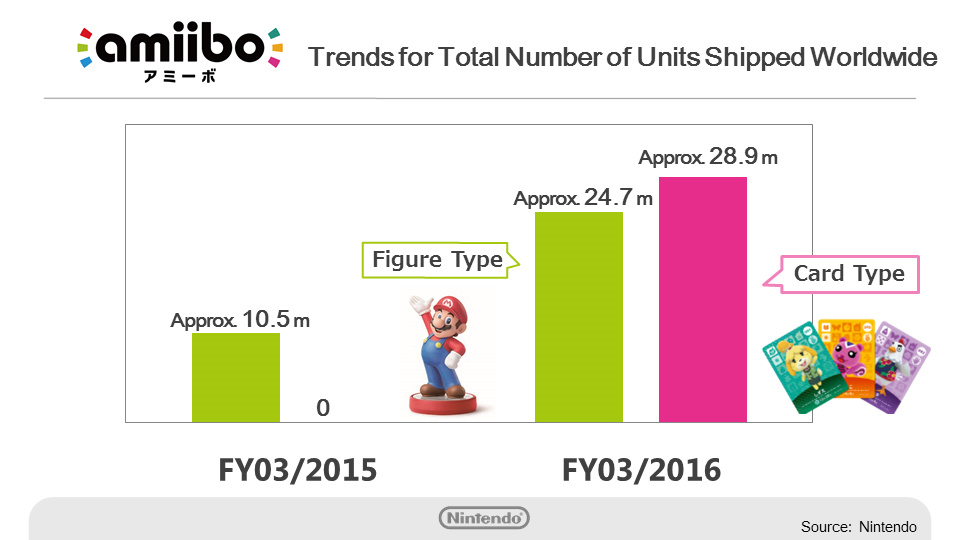
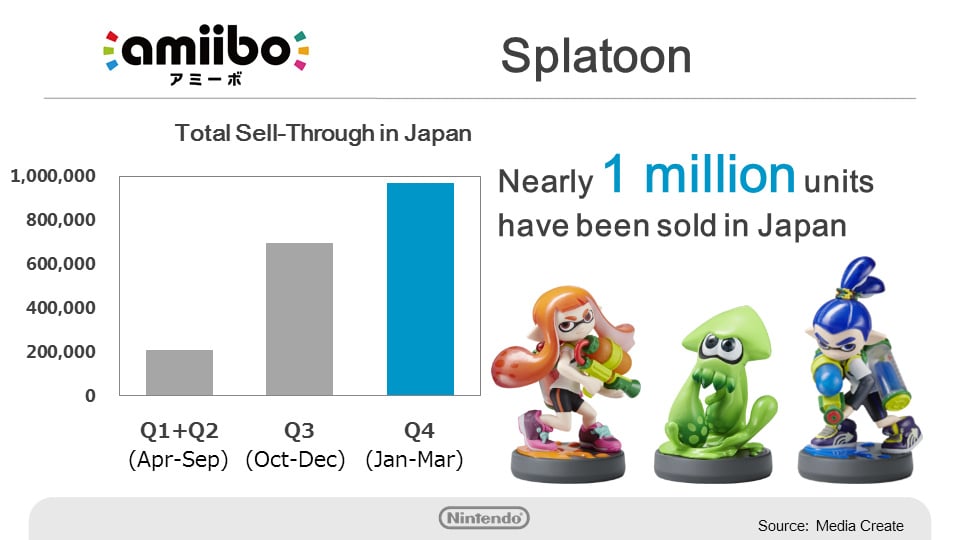

Of course, those happy updates were less than a year ago, so it's not exactly ancient history. Nevertheless, the continuing fade of Wii U and some figures being tied to titles that typically shift less units - like Mario Party: Star Rush on 3DS - have contributed to momentum slowing down and the vibe around the range shifting. In the nine months since those giddy highs Nintendo recently reported that, from 1st April up to 31st December 2016, it had shipped around 6.5 million figures and only about 6.6 million cards, so after the final three months of the financial period they're clearly going to fall short of those impressive figures from the previous year. In Tatsumi Kimishima's investor briefing the range only had a brief mention that said very little.
For amiibo fans there's reassurance that, of course, the figures and cards will be compatible (when software allows) with the Switch, with the NFC reader now located in the right Joy-Con. Yet the range hasn't been anything near prominent in Switch marketing, and is largely ignored in the flashy Switch hubs on official websites; this is perhaps a reflection of amiibo drifting away from the spotlight. Once you dig into the amiibo-specific areas of Nintendo's sites you see promotion of the new figures coming for The Legend of Zelda: Breath of the Wild on Wii U and Switch, of course. Other upcoming releases include the recently announced Celica and Alm to tie-in with May's 3DS release of Fire Emblem Echoes: Shadows of Valentia, and cards for Mario Sports Superstars.
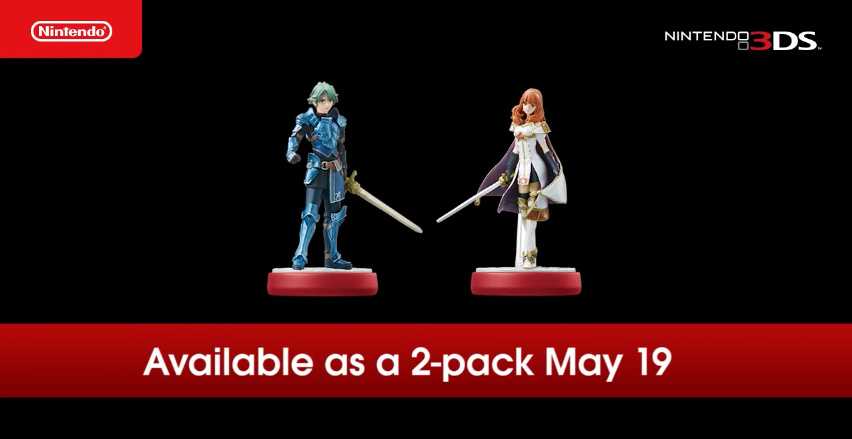
These are interesting cases, and it should be said that they show Nintendo is still eager to keep the range growing. It's not entirely clear what the new figures for Breath of the Wild do (some of which are pictured at the top of this article), though Smash Bros. and Anniversary ranges for the series will deliver items in the game or, in the case of Wolf Link, bring that character in as an AI companion. The Mario Sports Superstars cards could be controversial depending on how they pan out - blind-packs will be needed to unlock the 'Star' versions of characters, a feature that's previously been driven by in-game achievements in Camelot's sports titles.
Of course, Nintendo has a lot of announcements likely still to come, and we'd be surprised if games like Splatoon 2 don't at least support existing figures. The company's commitment to the range will be interesting to observe, though - those new figures and cards on the way will have begun development when amiibo and the toys-to-life sector were relatively hot, but now the market is softer. The 'toys-to-life' sector has seen sales fall in countries like the US, LEGO Dimensions arrived and Disney Infinity bit the dust, and there have been persistent rumours that the Skylanders series is struggling and could be at threat, though at present it's still very much alive. Toys-to-life is far from finished, but as a sub-industry it's not quite the runaway money-maker it was before.
For Nintendo, the challenge is making the figures truly interesting. Games like Yoshi's Woolly World have used them quite well, and as a Nindie Yacht Club Games did a nice job with its Shovel Knight amiibo, but in some cases the figures and cards have been used in uninspiring ways. Another problem for Nintendo is that some pick them up primarily as collectibles; sales are sales, yes, but for the range to shift big numbers it needs have relevance in improving games. In some cases amiibo are semi-lazy content unlocks and little more; it's not hard to see why some feel turned off.
As for what Nintendo should do to make amiibo a must-have again, it'll naturally have talented individuals considering that very point. That said, we do have one word, a drum we've beaten before - Pokémon, namely Pokémon amiibo cards. Frankly, when Pokémon Sun and Moon came and went with no whiff of amiibo, and instead offered chunky toys entirely unrelated to the range, we were surprised.
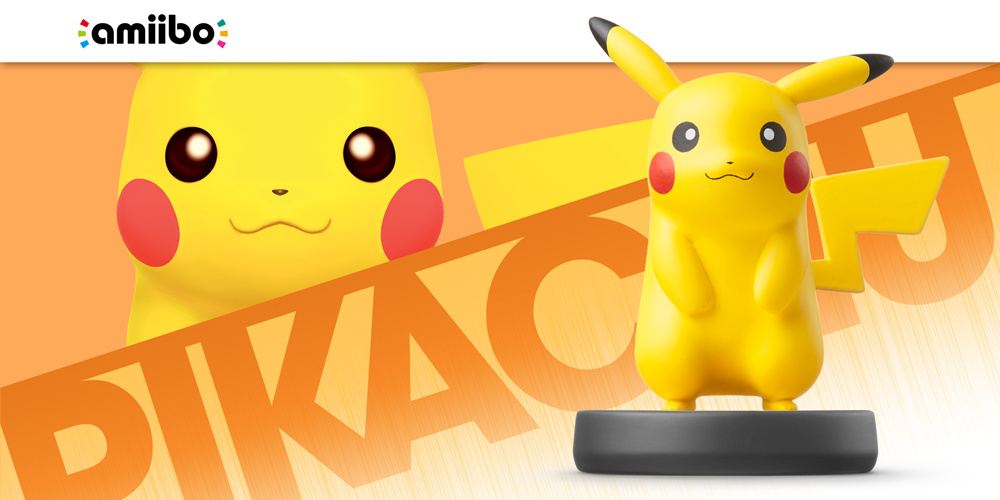
On a superficial level, Pokémon amiibo cards could be an extraordinary success - it's a series focused on collecting and so taps into that compulsion, and of course the games are normally followed by new ranges in the Pokémon Trading Card Game. This is a franchise that has collecting cards at its heart, even if the video games and TCG exist in relatively separate spaces; in fact, amiibo could help being the two together.
It seems like a no-brainer, but to be fair it'll never be that simple. A series as entrenched and with a fan-base as passionate as Pokémon's always considers moves carefully, especially as there's also a vibrant competitive scene to consider. With that in mind integrating amiibo cards would need careful management, but it is a series that - particularly in Sun & Moon - hasn't been afraid to shake up the formula and try new things. Perhaps if the rumoured third game to follow Sun & Moon does come to Switch, as reports suggested earlier in the year, that could be a jump-off point for a franchise ready-made to sell collectable amiibo cards (and perhaps some figures). Ultimately Nintendo needs to want this to happen and then get The Pokémon Company and Game Freak on board.
Rather like with any Nintendo product range or concept, over the coming months major reveals for Switch will be picked over to see how far amiibo is supported. Super Mario Odyssey is another - will Nintendo incorporate the range into the adventure, or decide it's not a good fit?
We think amiibo can still be a hit for Nintendo, but its momentum has stalled in recent months, and we've seen plenty of them looking a little unloved on shelves at a discount here in the UK, at least. With more figures and cards coming and a number of Switch games yet to reveal their full hand ahead of release later in the year, it'll be interesting to see whether Nintendo has new ideas and ambition for amiibo, or whether the concept will slowly fade into the background.
Let us know whether you hope to see amiibo grow and flourish in the coming year or two, or whether you think it's time for Nintendo to focus its attention elsewhere.



Comments 60
Still no Corrin amiibo? Or Cloud? I NEED MY WAIFUS!!!
@LuigiMan123 Speaking of waifus, I bet a Tharja amiibo would sell like hotcakes
I'll still be waiting for the bayonetta amiibo when it comes out......eventually
Yes corrin, cloud and bayonetta! I'd buy them asap! When?! For heavens sake, WHEN?!
Pokémon amiibo trading card game. Watch them come to life. Collect them all and live in the poor house.
Sold in blind packs. Poor house not included.
Make an amiibo only game that plays like Dokapon Kingdom.
I would get that in a heartbeat!
I'm so excited for JUDD Cat amiibo, SPIKE amiibo, CAPTAIN CUTTLEFISH amiibo!
There's 2 Smash Amiibo CPSIA numbers that alludes to single packs. Corrin has an unused skin in Poochy & Yoshi's Wooly World. it's probably safe that we have at least 3 to 5 Amiibo, 2 of which being a US-exclusive Dual pack for Echoes. they're probably going to reveal Corrin and Bayonetta's Amiibo in a few months.
I'd say Cloud, but even Square Enix was quiet about Dragon Quest XI for the most part, they would have to announce something like FF7 remake or even new material to justify making a hubbub about him let alone use his Amiibo. they're just keeping quiet about Amiibo, presumably so that they don't alienate the audience who might not go for Nintendo consoles, they just show it only for Zelda directly because they already mentioned a line of Amiibo+Wolf Link that would be compatible with it.
By the time E3 comes around, they'll probably announce Smash 5 or something. or Platinum games either showing off a Bayonetta 3/Jeanne spinoff, or something unexpected that use her Amiibo. an ultimately unexpected thing would be if they worked with Capcom by letting them make games with their Clova-era IPs.
Maybe they might also use E3 to promote story details of Splatoon 2 or list new-age amiibo usage. would it be extreme to suggest Callie/Marie reprints or even an Octoling/Octo-sisters amiibo? the Octosisters could be Babymetal inspired. Yacht Club Games will probably need more grease to squeak the wheels since Shovel Knight's amiibo lost the 2 player exclusively. (but not the customizable shovel knight) maybe a Mii skin in Mario Kart 8 Deluxe or used in one of the Steamworld games.
I pre-ordered the Zelda Guardian Amiibo, but I still don't know what it does
I love the range but collect them just for the figures. Nintendo need to make a game specifically for them. So we can scan in any character we like to play mini-games or a platformer. Anything would be better use than just on the shelf. That being said I keep buying them.
I prefer Card based Amiibo rather than Figurine Amiibo. 2 Reasons :
1. Card based is easy to be stored.
2. Card based Amiibo is cheaper than Figurine Amiibo.
Hopefully Nintendo release more Card based Amiibo for Very Important Nintendo games. And No using Amiibo to play / win Rules.
I hope SCamiibo die!
It's funny, I was just thinking about a line of Nintendo trading cards which also function like amiibo earlier this week. I think such a series of cards could be really cool. They could make holographic and rare cards to make collecting them fun, possibly stats for battling, and they'd actually be able to function in games. Basically Pokemon Cards with amiibo compatibility but for all Nintendo characters. A card series like that could easily get me back into card collecting... which is something I haven't been into in roughly 10 years.
Oh, hasn't this extortionate fad run it's course yet?
@TruenoGT
Great ideas, all of them! A boss series from the various games would be awesome, as would F Zero.
@SLIGEACH_EIRE It's truly impressive the subtlety of argument that the capitalization provides.
Oh God. A Pokémon amiibo TCG thingy would be an absolute nightmare, and that right there would be my personal que to finally stop collecting amiibo altogether. Or at least the cards. Maaaaaaaaaybe if they'd ''only'' make one of each Pokémon (with probably one or two extra for select Pokémon, mostly Pikachu), but that'd still come down to 800+ cards at the very least at this point... my wallet weeps at the thought alone.
I need to finish my Smash collection, and it clearly takes a year for Nintendo to make the final 3 fighters :/
Otherwise I only buy FE Amiibo. I dont care about Mario people or AC enough to buy those and I despise the concept of blind card packs. I might reconsider if we ever get an Amiibo-centric game like Infinity though
Also, I'd throw all my money at Pokemon Amiibo
Just give me the last smash amiibo and I can retire for now.
Please don't put Pokémon and amiibo in the same sentence ever again.

For the love of Arceus, please.
@AlexSora89
800 Pokemons x $20 each = $16000 !!!
I can buy 1 newest Dance Dance Revolution machine. XD
Magic the gathering now that's a Card Game
All I know is that I need the Alm/Celica 2 pack and BOTW Zelda. And the MH Stories Amiibo(except for that stupid looking felyne) if we ever get that....
And Female Corrin if they ever release her...(let alone the already announced male Corrin)
Maybe the guardian.
Amiibo's by themselves is fine.
Getting DLC from Amiibos is fine.
Having DLC that isn't worth the price of the Amiibos exclusive to Amiibos and often require repeated scanning of the Amiibo to use the DLC to make sure you aren't "sharing" them is Ponyta manure.
I'm definitely getting the archer link amiibo and cloud. Those are my 2 most anticipated right now. And I'd dare anyone to try and talk me out of it.
@Captain_Gonru they put it in the Joycon because you would have to get up and walk to the Switch when it's docked to use an Amiibo. You know the Switch is also a homeconsole as well as a handheld right?
I'm surprised I never thought of the completely obvious marketing potential of expanding amiibo and Pokemon into one another! Damn.
I only buy amiibo that I think are really sweet and that I relate to...so far I have green Woolly Yoshi, Lucas, and Wolf Link...only other ones I might want at some point are Rover, Diddy Kong...maybe the new BotW ones, they're darn pretty. Sure is a hell of a lot of clearance Animal Crossing amiibo at Walmart.
@arekdougy Me too.
Which is why my collection stands at 48.
@Franklin I'd say they are better than more expensive Nintendo figures of lesser quality and size. Plus, if it's your thing you can use them in game. It's only people who MUST own an entire set of something who choose to be extorted.
I really think the time is ripe, with the launch of the Switch, for them to announce a "Nintendo Infinity" at E3 if they are ever going to. Except unlike Disney Infinity just put out updates to the original game instead of releasing a new iteration every year. That way there would be one game where every amiibo, including all the cards, has a purpose, and those of us with over 100 of the darn things won't feel like we've thrown thousands of dollars away on nothing.
@H1B1Esquire I would love that.
I wasn't expecting Pokemon amiibo with Sun and Moon, and I'm not expecting a Pokemon amiibo range any time soon. I'm struggling to think of any good uses of Pokemon amiibo in a main series Pokemon game.
As for other amiibo, I've mostly lost interest for now. There's far too many to bother collecting, and too many of them seem to be primarily designed for a single game.
@TheLobster So, LEGO Dimensions, except Nintendo. This makes too much sense.
@SLIGEACH_EIRE
Geez...
I hope Nintendo not rely on Amiibo too much.
I prefer Card based Amiibo due to cheaper price and easy to be stored.
Just let other people including me buy some Amiibos, keep your hatred against Amiibos inside your heart.
@AlexSora89
I'd die to have a Amiibo of Meloetta (and both forms)!!!
@Anti-Matter
DDR, I miss that great games!!
I think every amiibo currently out should get a new game in their respective franchise and have a really neat use in their game, though not "content locking". Similar to the Wolf-Link amiibo.
Also an amiibo based game similar to Skylanders/Disney Infinity would be neat too.
@2CUTE4YOU I haven't played Lego Dimensions. I'm afraid to get into another toys to life craze, especially with Lego. But thinking about it, yes, that is a good analog.
I need Pokemon amiibos in my life! All 800-whatever! Well, maybe except for Sawsbuck, Deerling and Stantler due to my phobia of deer. But no worries, I plan to finally tackle that fear with BotW!
Personally, I like amiibo's but there is one thing I would really love Nintendo to do in support of them. I would like to see a Diablo style "hack n slash" game themed around the Nintendo universe that exclusively uses the amiibo's for your characters (leveling, loot and character growth saved to the figures). Similar in concept to earlier Skylanders titles but much lighter on the story and cinimatics and more focused on gameplay (Torchlight II springs to mind). Pre-built levels would be nice but I'd be fine with procedural level generation to save on development cost and increase replay value. Basically theme the levels around the many Nintendo worlds like Metroid, Mario, Zelda, Pokemon, Kid Icarus, Star Fox, Kirby, Chibi Robo, etc. (the possibilities are endless). Lastly and most important, 2-4 player local co-op is an absolute must! This would be an amazing exclusive game for the Switch as the simple controls would work perfectly with the Joycon's and would surely cause a massive spike in amiibo sales. Make it happen Nintendo.
Just release Cloud and Bayonetta and I'll be happy.
Dead......
@Anti-Matter
That much money, even in the best-case scenario I'm looking for, equals one year's worth of paychecks.
Implying I'm using that much money to buy all the amiibos. So no.
If Nintendo was ever to give the entire Pokémon franchise the amiibo treatment, they should at least make a figure for an entire evolutionary line (like a Mankey+Primeape figure or a Totodile+Croconaw+Feraligatr figure) or an entire legendary duo/trio (like a Dialga+Palkia figure or a Regice+Regirock+Registeel figure) and unlock them in-game. That way, it would work.
Otherwise, they would be much less likely to even earn back the figures' own cost.
@SakuraHaruka
Following the same reasoning as my comment above, figures featuring both forms/formes of any given Pokémon would work, whether they were a zen/normal Darmanitan amiibo or a legendary Pokémon such as Meloetta or one of the Unova genies (Thundurus, Landorus and Tornadus, which could go separately but also feature both forms/formes in the same piece of plastic).
Or they could just make amiibo cards and call it a day.
Please just hurry up with the Cloud Amiibo, they said it would be made when the Switch version (NX back then) of Smash came out, but when is that going to happen? There has been no news on this game at all!
Ultimately an amiibo is just a chip with a tiny amount of memory on it. They will never be able to anything special or unique with them.
But, they are popular as collectables, so I don't really mind other people keeping Nintendo in profit while I play their games.
I loved the idea of amiibo when they first came out, but now Nintendo are mostly just using them to lock away content and bleed consumers dry.
If Super Mario Odyssey uses Amiibo in the same way Mario Maker does - I'll retract previous statements I've made about the game and buy it. I wanna play as Ness/Inkling Boy in a vast open world dag-nabbit! Even if it is just a mostly aesthetic change!
Make more stock and do Pokemon and the cash will flood in.
I'm done with amiibo. Mistake to buy them. I'm trying to sell all the ones I purchased.
@TruenoGT I've been thinking the same thing re enemy amiibo (esp Metroid), but the mini-systems idea had never occurred to me. That's a great idea, and totally taps into the same nostalgia as the 8-bit amiibo. I'd probably pick up the whole range if they made NES through Wii U systems... plus the handhelds too. If they were linked to something on the Virtual Console, even better.
@Captain_Gonru The NFC reader/writer is in the controllers not the Switch. Do you think when and if Nintendo makes a Switch "buzzword", the old controllers won't work with it?The only way they would remove NFC is if they would make a new Joycon and a new Pro controller, which they won't because so many people have Amiibo and still buy them. Also fyi, no games have used the touch functionality on the Switch, look at Splatoon 2. So Nintendo designed the Switch with non touch based gaming in mind. Would not surprise me if touch is only used for menu navigation when both Joycons are off and the system is not docked or maybe it will never be used at all. remember the exspansion ports on the NES, SNES and N64 or the DS mic, 3DS 3d AR camera or the Wiiu gamepad camera and gamepad EXT slot. You used them one time or never if you live outside of Japan. So Nintendo has designed systems with features that are never used, functionality be dammed
@AlexSora89 I doubt that in Figurine form at least. Pretty they'll do amiibo cards which they already do a TCG for anyway so maybe combining those 2 elements similar to the e Card Reader back in the day....
Once again, you would think amiibos are some product forced on consumers at gun point reading some of the comments on here. I do agree we need to see better functionality.
I also don't know how you factor amiibos into Pokémon without it either being cheap or interfering with the difficulty of the main game
I do love the idea of a Disney Infinity style game using amiibos
Need a game like Skylanders where it is centered around Amiibo to unlock the characters.
I've said it before but Splatoon seems like the perfect fit for Amiibo-- at least all the smash ones. You could at least have shirts/hats and shoes based off of characters. But take it a step further-- make specific weapons based on the Amiibo. Main weapons, don't make it whimpy
@Angelic_Lapras_King
I'm still shuddering at the thought of individual Pokémon in figurine form.
@AlexSora89 Which again, I doubt they'll do. Maybe a line for Pokken Tournament if they did a port/sequel on the Switch with all the fighters or for the sole 7th Gen event Pokemon for Sun/Moon but again a whole 802 line could only ever been achieved through cards. There's no way they can keep all of them in stock meaning less desired Pokemon like Mr Mime or Muk end up super rare and sold for hundreds by scalpers.
So yeah, I'm certain its not happening....in figure form anyway. XD
I would like to see an amiibo centric game that actually sells me on these figures. Not like that mario and dk game but a skylanders type game that has some depth. As of right now I fall into that amiibos as collectable figures camp. The use of the figures hasn't been that great tbh
@Angelic_Lapras_King
I hope so too, because out there someone is thinking about it.
Tap here to load 60 comments
Leave A Comment
Hold on there, you need to login to post a comment...